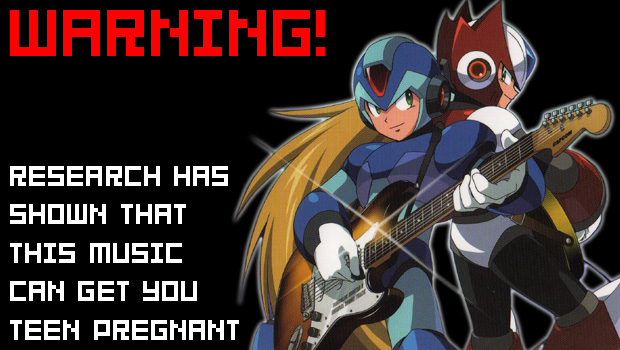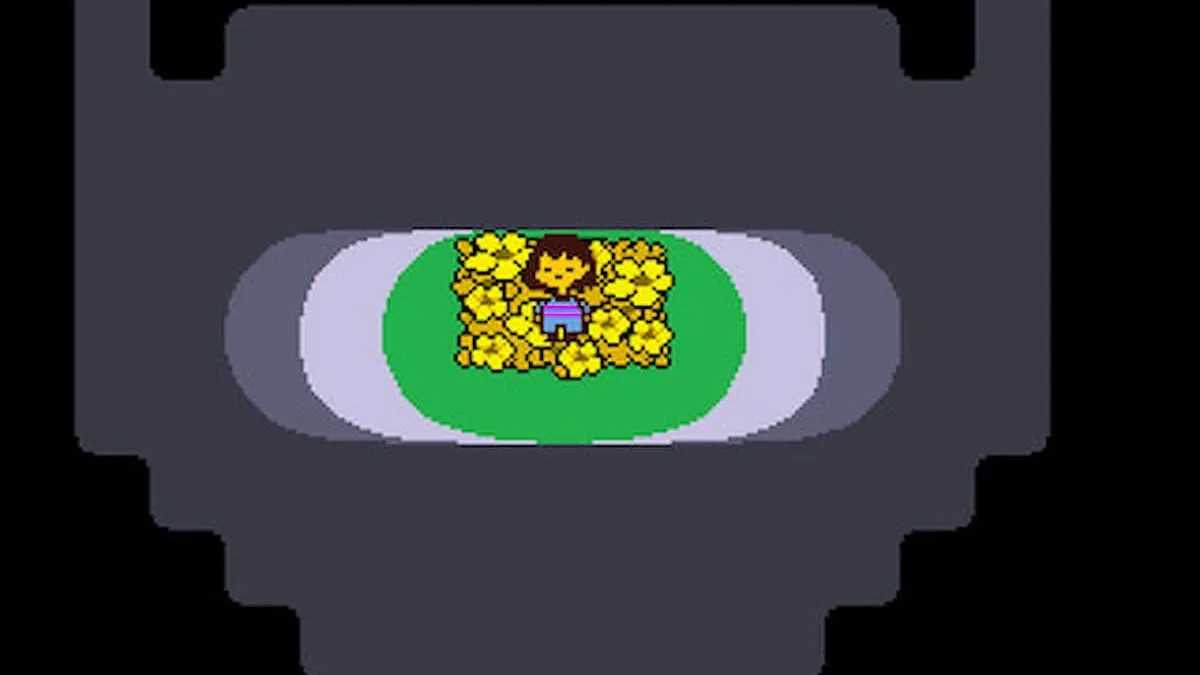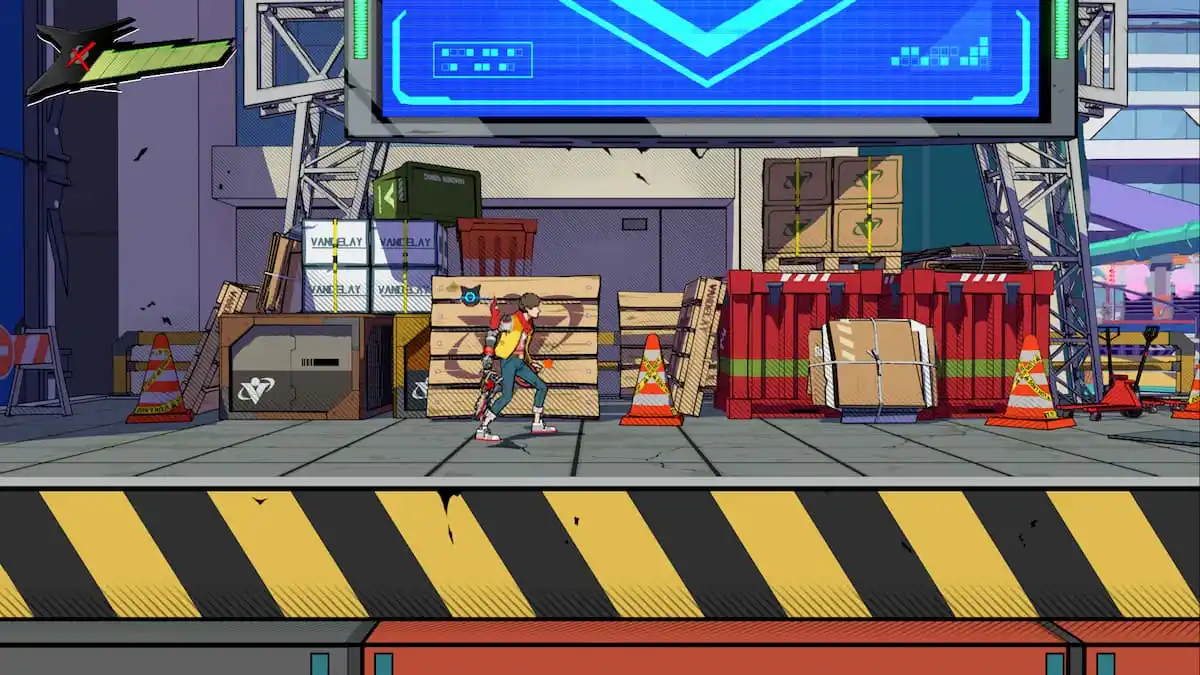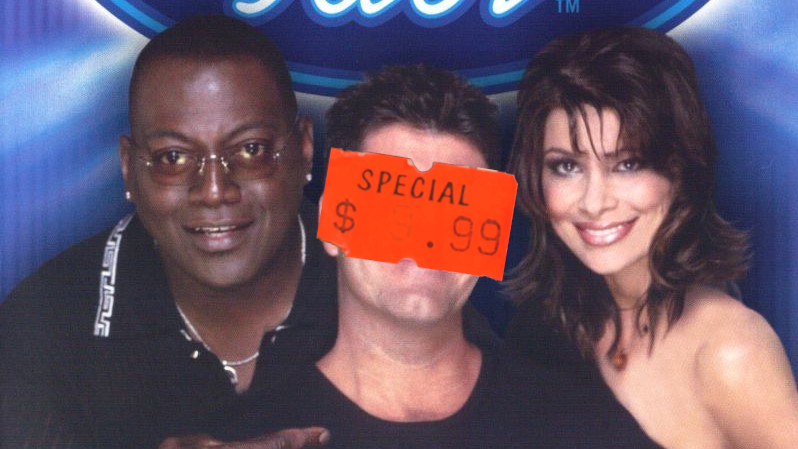[It’s been a while since I’ve done a Monthly Musing, but I couldn’t pass up an opportunity to gush about my favorite face-melters from the chiptune days! — Tony]
I love chiptunes, and not just because they awaken dormant emotions not felt since my formative gaming years. I admire the skill and fortitude demanded of chiptune artists, able to compose memorable tunes using the most cumbersome of tools. Remember, it was not long ago when game music was the domain of lone programmers rather than the multi-piece orchestras of today. What set those early tunes apart was that age-old construct: heart.
The casual listener may not be aware of the impact pop culture had on chiptunes and may perceive the melodies as electronic chirps arranged into patterns that just so happen to approximate actual music. However, the more discerning ear is able to notice the influence of various genres and period musicians. Most game soundtracks employed bubbly tunes with infectious hooks, clearly inspired by pop and dance. Personally, I have an ear out for jams with a bite to ’em.
I’m talking hard rock, babycakes!
There’s nothing that gets me more amped than the heaven-splitting din of the mighty axe. Some of my favorite soundtracks — F-Zero X, Guilty Gear XX, and Contra: Shattered Soldier — lean heavily on the metal, yet the audio in those games benefits from relatively beefier hardware. In my mind, a composer who can break through the limitations of pre-32-bit hardware to produce a score with all the intensity of a Helloween album is one who deserves immutable veneration.
That said, here’s a primer of chiptune-era games with kick-ass, rock-heavy soundtracks.

In the late ’80s, Sunsoft was working on an adaptation of The Terminator but was forced to give the game a rough makeover after losing the license. The result was Journey to Silius, an oft-forgotten classic that stands shoulder-to-shoulder with other Sunsoft greats like Blaster Master and Batman.
If its games proved anything, it was that the company certainly knew its way around the ol’ 2A03. Nowhere was its musical proficiency better exemplified than in Journey to Silius. The sound team must have tapped into some ancient magic, because the bass here is uncommonly rich for an NES title.
You know the shop is open for business when you boot the game and hear these drums:
Journey to Silius – Title
That drumming is the game’s heartbeat. It’s the rhythm of the machine gun in your hands, the rally cry of the robotic hordes. It lends a degree of urgency to every moment, even to the hard-earned respites from the action.
Journey to Silius – Stage 4
The score carries such weight that you can feel it bearing down upon your back. It’s dark and heavy, making it the perfect soundtrack for the machine apocalypse.
Keep ’em comin’:
Journey to Silius – Stage 1 & 5
Journey to Silius – Stage 2
Journey to Silius – Stage 3
Journey to Silius – Boss

The music of the Castlevania series is both haunting and distinct — gothic with a jazz twist. You can almost see the keys of the church organ being pounded with ferocity. Starting with Rondo of Blood and Symphony of the Night, the sound began to incorporate guitars and techno beats. However, there was one game predating both of those titles to cross that line first.
Belmont’s Revenge on the Game Boy was a surprising follow-up to the rather disappointing Castlevania: The Adventure. Of the many improvements, the audio stands out most of all, delivering a charged score that at times reaches thrash metal levels. Imagine that! Thrash metal on the Game Boy!
Castlevania II: Belmont’s Revenge – New Messiah
Whereas the NES could only output sound in mono, the Game Boy could output in stereo when headphones were plugged in. The difference is day and night, and the nights of Belmont’s Revenge are unbelievably black. Just listen to that double bass drumming!
Speaking of which, the following is perhaps one of the best tracks in the entire franchise. A real head-banger, this one:
Castlevania II: Belmont’s Revenge – Original Sin
Even when the music slows down, the intensity never falters. This is what vampire murder should sound like, not that pussy sparkle shit.
Keep ’em comin’:
Castlevania II: Belmont’s Revenge – Ripe Seeds
Castlevania II: Belmont’s Revenge – Psycho Warrior
Castlevania II: Belmont’s Revenge – Evil Gods
Castlevania II: Belmont’s Revenge – Road of Enemy #2

Shattered Soldier, which I name-dropped above, was a direct successor to Hard Corps on the Sega Genesis rather than to Contra III on the SNES. The two elements that tie them together are their parades of Treasure-caliber boss battles and soundtracks that blend hard rock with electronica. While Shattered Soldier lands on the “blood-curdling death metal” end of the spectrum, the Hard Corps tilts in the other direction with thumping house and pulsating industrial vigor.
True to its name, the music makes you feel hardcore even as you die over and over and over again. In the opening seconds of the game, you barrel down a war-torn city in your party wagon, steamrolling hapless enemies in your path before getting launched through the windshield and into the thick, all while this blares through the speakers:
Contra: Hard Corps – The Hard Corps
That is how you make an entrance!
Later on, there’s an ocean shore stage comprised entirely of a fight against an endlessly morphing boss reminiscent of Seven Force from Gunstar Heroes. As you tackle form after new form, you are motivated by what I fondly regard as the game’s “surf rock” anthem:
Contra: Hard Corps – GTR Attack
This game totally has ADHD. In addition to tossing a new boss at you every five steps, the music changes up just as often. There can be two, maybe three track changes in a given level, and sometimes the change comes before a track even has a chance to loop once. It’s so wild, and I love it!
Know what else I love? When a game suddenly throws a wicked guitar solo in the middle of a song. And wouldn’t you know it, Contra: Hard Corps is full of ’em.
Keep ’em comin’:
Contra: Hard Corps – A Spirit of Bushi
Contra: Hard Corps – Format X
Contra: Hard Corps – Last Springsteen
Contra: Hard Corps – Simon 1994RD (A “Vampire Killer” remix that plays during a battle against a Simon Belmont robot that throws fish boomerangs, I swear to God)

Comix Zone, the living comic game that got a bum deal by being released during the twilight years of the Genesis, has a rockin’ soundtrack of a different color. It’s very grungy and mellow, taking its cues from early-’90s alt rockers like Nirvana and Soundgarden.
Have a listen to the first level’s track:
Comix Zone – Night of the Mutants
Hear the influence? Reminds me of “Smells Like Teen Spirit” a bit.
Sega really wanted to draw attention to the music. Each copy of the game included an “inspired by” CD sampler that featured artists such as Danzig and Love and Rockets. Later on, a vocal arrangement album of select game tracks was released. Such treatment, uncommon for a videogame at the time, was proof that here was something special.
Comix Zone – Welcome to the Temple
Relax. Chill out for a bit. Enjoy the change of pace, because from here on out I’m going to be blowing your mind.
Keep ’em comin’:
Comix Zone – Introduction
Comix Zone – Curse of the Dead Ships
Comix Zone – Where’s My Part in This?
Comix Zone – Staff Roll

Thunder Force is a shmup series from Technosoft that started out on Japanese computers and eventually ended its run on the PlayStation 2. If there was any point in the series you’d be familiar with, it would be the Genesis era that spanned the second through fourth titles. Oddly, since the hardware to run the original never came out here, Thunder Force II was the series’ Western debut.
The games feature some killer soundtracks that only get better with each new entry. However, it wasn’t until Thunder Force III that the franchise crossed into true synth rock territory.
Thunder Force III – Venus Fire
Keep ’em comin’:
Thunder Force III – Back to the Fire
Thunder Force III – Final Take a Chance
As I said, each sequel raised the bar of awesome. Thunder Force III has a very clean power metal vibe going for it, but Thunder Force IV positively revels in the raw, crunchy guitar riffs that only the Genesis could produce.
It grabs you right there at the title screen and never lets go:
Thunder Force IV – Lightning Strikes Again
A game that starts strong should ideally end strong. Thankfully, the staff roll theme has that job covered:
Thunder Force IV – Stand Up Against Myself
For some bizarre reason, this game was retitled Lightening Force: Quest for the Darkstar in the States. Yes, you read that correctly — there is a superfluous ‘e’ inserted right in the middle. I don’t know what the powers-that-be were thinking when they made this change, but no typographical error or goofy-as-all-hell subtitle can kill this game’s mojo. Thunder Force IV‘s soundtrack is beyond a shadow of a doubt the magnum opus of Sega’s 16-bit audio library.
Keep ’em comin’:
Thunder Force IV – Attack Sharply
Thunder Force IV – Strike Out
Thunder Force IV – Metal Squad
Thunder Force IV – Down Right Attack

Everything about the classic Mega Man series was raised exponentially in the X series — stages were bigger, the weapons were deadlier, and the stakes were higher. On the sound front, the catchy pop jams of the originals made way for honest-to-God ’80s hair metal. Who knew the future would sound like Guns N’ Roses?
I played Mega Man X for the first time at a sleepover. I remember being so blown away by the energy that I just stood at the start of that highway introductory stage for a few minutes and let the music envelop me. This was damn fine chiptune.
Mega Man X – Opening Stage
Okay, so the SNES technically didn’t do “chiptune” music. The audio was generated by a second CPU, completely separate from the main system, that used instrument samples. That’s why SNES games sound so rich and natural compared to games on competing consoles. But really, who’s going to throw a fit over my mentioning the SNES during a chiptune reminiscence?
It’s okay to make exceptions when the music is this good. That thick guitar sound, as spacious as if it were being played in an amphitheater, will always be the trademark sound of the SNES generation to me.
Mega Man X – Spark Mandrill
Keep ’em comin’:
Mega Man X – Storm Eagle Stage
Mega Man X – Armored Armadillo Stage
Mega Man X – Sigma 1st (John, play the fight riff! Play it!)
Sadly, X2 and X3 couldn’t live up to the first outing, especially in the audio department. It wasn’t their fault that perfection was achieved the first time around! Nonetheless, there are some great tracks to be heard.
Besides, after likening the music of the X series to Guns N’ Roses, I’d be remiss to not bring up X3‘s Neon Tiger, whose theme borrows a whole measure directly from “My Michelle“:
Mega Man X3 – Neon Tiger
Keep ’em comin’:
Mega Man X2 – Opening Stage
Mega Man X2 – Flame Stag Stage
Mega Man X3 – Gravity Beetle Stage
Finally, let’s talk about X’s crimson counterpart Zero, the grand show-stealer and the originally planned star of the X series. Like Proto Man with his whistle, Zero’s appearance is marked by a hard-rockin’ theme song. The theme changes in each game, but it’s always one of the big standout tracks. My favorite would be the theme from X2, played during the epic confrontation between these lifelong friends destined to be enemies:
Mega Man X2 – Zero
Keep ’em comin’:
Mega Man X – Zero
Mega Man X3 – Zero
——————–
Don’t believe for a second that this list is comprehensive. There are so many other games and jams that I could discuss, but I don’t want to split your guys’ skulls open too wide in a single sitting. Maybe I’ll revisit this topic at a later date.
‘Til then, rock on!




